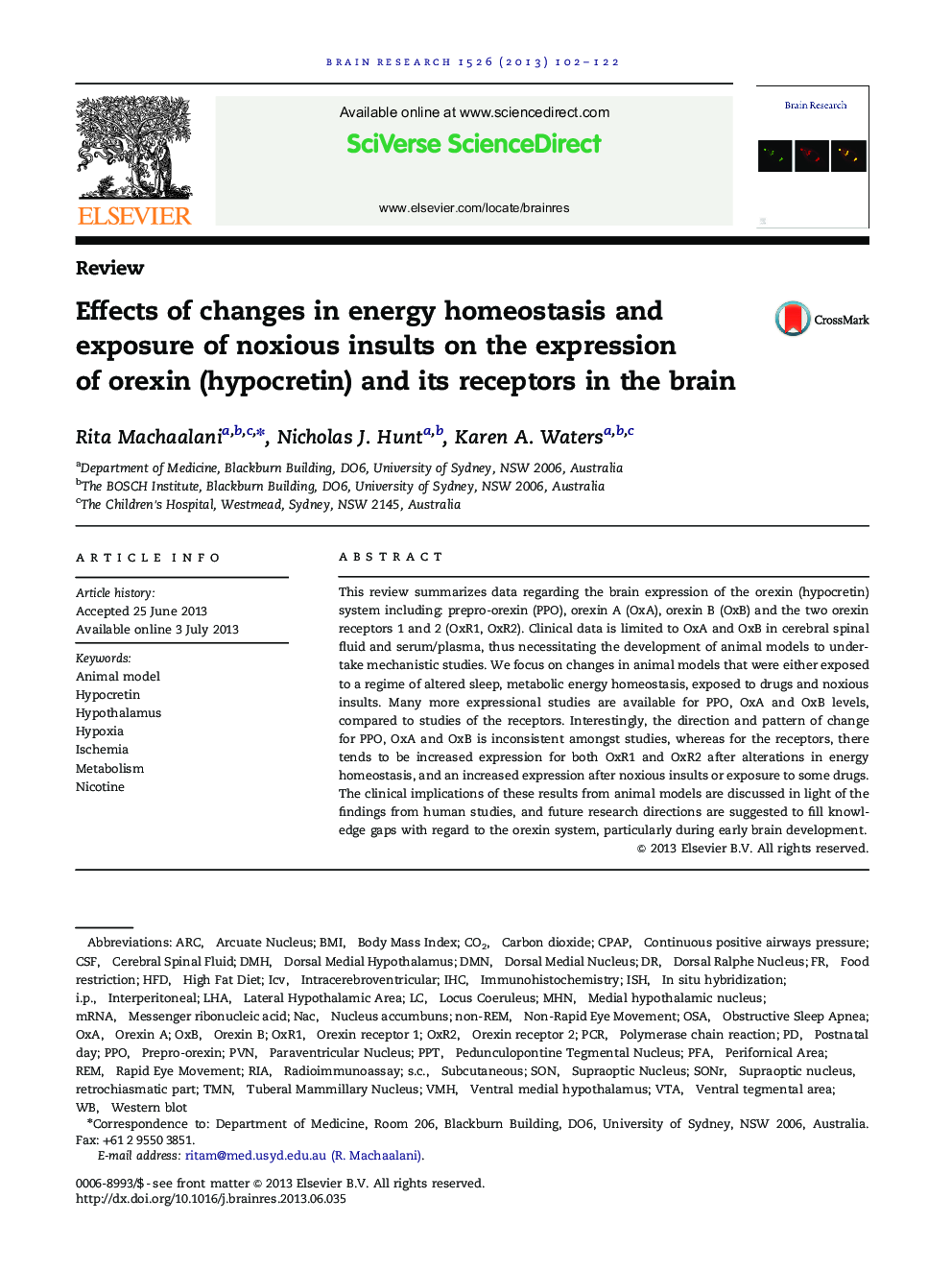| Article ID | Journal | Published Year | Pages | File Type |
|---|---|---|---|---|
| 6263750 | Brain Research | 2013 | 21 Pages |
â¢Clinical data is limited to orexin A and B in CSF and serum.â¢Animal models allow for studies of CNS expression of the orexin system.â¢Prepro-orexin, orexin A and B expression are more widely studied after altered homeostasis.â¢The expression of the orexin receptors 1 and 2 are relevant for therapeutic potential.
This review summarizes data regarding the brain expression of the orexin (hypocretin) system including: prepro-orexin (PPO), orexin A (OxA), orexin B (OxB) and the two orexin receptors 1 and 2 (OxR1, OxR2). Clinical data is limited to OxA and OxB in cerebral spinal fluid and serum/plasma, thus necessitating the development of animal models to undertake mechanistic studies. We focus on changes in animal models that were either exposed to a regime of altered sleep, metabolic energy homeostasis, exposed to drugs and noxious insults. Many more expressional studies are available for PPO, OxA and OxB levels, compared to studies of the receptors. Interestingly, the direction and pattern of change for PPO, OxA and OxB is inconsistent amongst studies, whereas for the receptors, there tends to be increased expression for both OxR1 and OxR2 after alterations in energy homeostasis, and an increased expression after noxious insults or exposure to some drugs. The clinical implications of these results from animal models are discussed in light of the findings from human studies, and future research directions are suggested to fill knowledge gaps with regard to the orexin system, particularly during early brain development.
